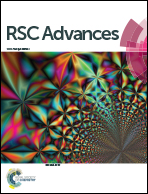Low temperature neutron diffraction studies on Co(Cr1−xFex)2O4 (x = 0.05 and 0.075)
Abstract
We report the magnetic structures of an Fe substituted cobalt chromite system, Co(Cr1−xFex)2O4 (x = 0.05 and 0.075), determined from the analysis of temperature dependent neutron diffraction measurements. The ferrimagnetic transition temperature (Tc) was found to increase from ∼110 K to ∼118 K with the increase of Fe substitution. Neutron diffraction studies reveal magnetic peaks below the transition temperature, Tc. In addition, we observed a broad hump below the Bragg reflection (111), indicative of diffuse scattering from short-range magnetic interactions coexisting with long range magnetic order below Tc. The length scale of this short range magnetic order shows unusual non-monotonic temperature dependence. The bulk magnetization data reveals that the magneto-structural transition (Ts) remains unaffected with temperature in both the compounds. This magneto-structural transition at Ts gives rise to the magnetic satellite peaks of the conical spin-spiral structure which can be indexed as (220)* and (002)* with a magnetic structure using an incommensurate propagation vector. With a further lowering of the temperature around the lock-in transition, TL (∼10 K), the incommensurate peak of the propagation vector (0.62, 0.62, 0) splits into two peaks with a deviation of 0.02 in Q-value from the centre.


 Please wait while we load your content...
Please wait while we load your content...